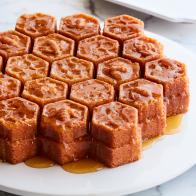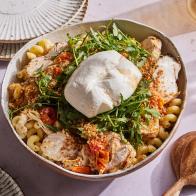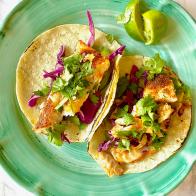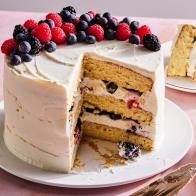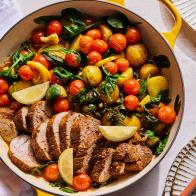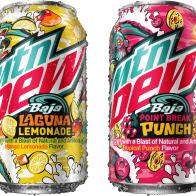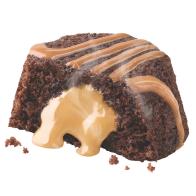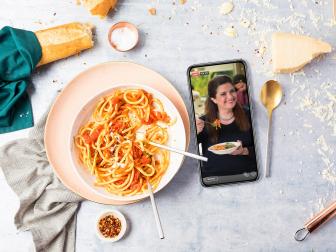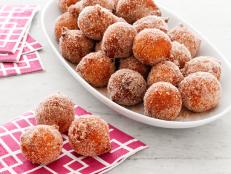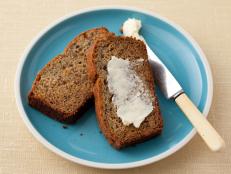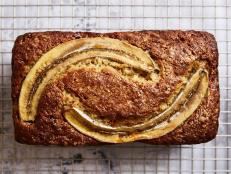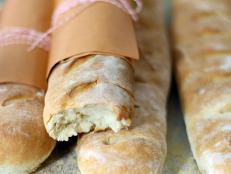How to Make Banana Bread Even If Your Bananas Aren't Quite Ready
Trust us, it’s possible.

Jason DeCrow
Get a Premium Subscription to the Food Network Kitchen App
Download Food Network Kitchen to sign up and get access to live and on-demand cooking classes, in-app grocery ordering, meal planning, an organized place to save all your recipes and much more.
Chances are you’ve been seeing banana bread everywhere recently. From Instagram to Facebook to cooking websites like our very own, banana bread has quickly become everyone’s favorite thing to bake — and for good reason, too! Moist, buttery and altogether delicious, banana bread not only makes the perfect comfort food, it’s also super easy to put together.
If you’ve never made banana bread from scratch before, or you want to take your go-to recipe in another flavorful direction, you won’t want to miss Marge Perry’s tropical Banana Bread with Coconut and Pecans class on the Food Network Kitchen app. Here’s a sneak peek at some of Marge’s expert tips and tricks.
Give Your Oven Some Lovin’
When it comes to making banana bread, really ripe bananas are key. If you’re not 100% sure if your bananas are ripe enough to bake with, check your banana peels for brown or black spots. The darker your peels are, the sweeter your bananas will be. If you only have unripe bananas at your disposal, fret not — there are two things you can do to speed along the ripening process.
If you have a bit more time on your hands and can hold off your banana bread craving for a few days, Marge suggests placing all of your bananas in a brown paper bag and folding the bag over as tightly as possible. “The more crowded they are the better,” Marge says about this super simple process, which causes your bananas to release ethylene gas and ripen at a faster rate.
If you can’t hold off on your craving and find yourself experiencing a “banana bread emergency,” Marge recommends placing your unpeeled bananas in a 350 degree F oven for 5 to 8 minutes, until your banana peels have turned completely black: “When they’re really black on the outside that means that they’ve gotten softer and sweeter,” she says. This not only makes your bananas easier to mash later on, it also ensures your bread’s banana flavor is as strong as can be.
Buttermilk Is Just as Important as Bananas
Chances are when you think of buttermilk, you often picture a towering stack of pancakes or a platter of freshly baked scones. Though it is an integral ingredient for making both of those things, buttermilk is also super important when it comes to making banana bread, too. “Buttermilk has acid which is going to interact with our leaveners and help us get a nice tender crumb. It also has a nice tangy flavor,” Marge says when adding it to her banana bread batter.
If you don’t happen to have buttermilk on hand, don’t worry. Simply follow Marge’s lead and add a tablespoon of vinegar or lemon juice to a cup of milk, letting it sit undisturbed for 5 to 10 minutes. This not only thickens the milk, but also helps your banana bread rise later on when baking.
Metal Pans for the Win
When it comes to making banana bread, the type of loaf pan you use matters more than you might think. If you’ve found your banana bread to be overcooked on the outside and undercooked on the inside when attempting to make it in the past, chances are you might have used a glass loaf pan, instead of a metal one. “If you use a metal loaf pan that’s less likely to happen,” Marge states when answering a viewer's question on the topic.
Though glass loaf pans are great for baking other quick breads, metal loaf pans conduct heat more quickly and don't mess with a recipe’s overall baking time. Since it takes glass loaf pans a bit longer to actually get hot and retain heat, using one while baking sometimes throws off your timing and often results in a drier finished product.
Related Links:
